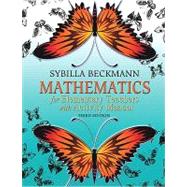Mathematics for Elementary Teachers, Third Edition offers an inquiry-based approach to this course, which helps students reach a deeper understanding of mathematics.
Sybilla Beckmann, known for her contributions in math education, writes a text that encourages future teachers to find answers through exploration and group work. Fully integrated activities are found in her accompanying Activities Manual, which comes with every new copy of the text. As a result, students engage, explore, discuss, and ultimately reach a true understanding of mathematics.
The new Active Teachers, Active Learners DVD helps instructors enrich their classroom by expanding their knowledge of teaching using an inquiry-based approach. The DVD shows Beckmann and her students discovering various concepts, along with voiceover commentary from Beckmann. This DVD is the ideal resource for instructors who are teaching with an inquiry-based approach for the first time, and for instructors who seek new ideas to integrate into their course.
The table of contents is organized by operation rather than number type to foster a more unified understanding of the math concepts. Throughout the text, students learn why the math works, rather than just the mechanics of how it works. In this new edition the contents have been updated and rearranged for a more natural organization.
As a result, readers engage, explore, discuss, and ultimately reach a true understanding of mathematics. Numbers & the Decimal System; Fractions; Addition & Subtraction; Multiplication; Multiplication of Fractions, Decimals & Negative Numbers; Division; Combining Multiplication & Division: Proportional Reasoning; Number Theory; Algebra; Geometry; Measurement; Area of Shapes; Solid Shapes and their Volume and Surface Area; Geometry of Motion & Change; Statistics; Probability.
For all readers interested in mathematics for elementary school teachers








